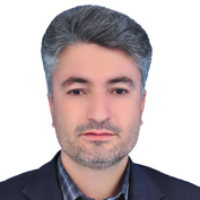The Role of Tourism Symbols in Rural Development (Case Study: Neshat Historical Garden in Taqiabad Village)
Author(s):
Abstract:
Introduction
Although symbol creation has had a long record in human history, throughout the history, the symbols as a mark bearing visual identity, have been used as a tool for communication. This means humans have used the symbols for thousands of years to describe natural phenomena and express their emotions, feelings and ideas. There are many historical and natural monuments in rural areas that are symbols and brands of those areas. Accordingly, they can have a huge impact on sustainable development of rural areas if they receive due attention. Nowadays in many rural areas, tourism has changed from a passive factor into a dynamic and effective one which may have positive effects on controlling the rural social landscape. The nature and significance of such changes make it necessary to pay special attention to functions of tourism and leisure activities in rural areas, so that in some cases it may prompt one to predict the possible effects.THEORETICAL FRAMEWORK : Since tourism and the use of natural and historical resources has changed into a need, the various uses of space has provided more opportunities for rural people to benefit from natural and historical monuments in their areas. Today, tourism as a phenomenon of the twentieth century plays a vital role in the global economy, and as a social phenomenon play a significant role in dynamic global economy. At the same time, as the world's largest service industry, tourism contributes to cultural exchange between countries. Persian Garden as one of the valuable historical and natural symbols of Iran which has recently been registered in World Heritage list (UNESCO) would remain in the minds of the people of the world.
Methodology
The research was conducted in a descriptive-analytical method. The data were obtained through documentary research and surveys. The population included about 20,000 people, of which 250 people were selected in a random sampling method as the sample of the study. We also used Kendall W Rank test to find which area has more positive tourism driven effects. The data were processed using SPSS software package. Cronbach's alpha coefficient was used to measure the reliability of the items.Discussion
The results showed that according to the value of chi-square (15.424), which is a significant at error level of less than 0.01, we may conclude with a confidence level of 0.99 percent that ideas of the participants about the effects of tourism on social, economic and physical aspects are different. According to the results, the physical effects of tourism (2.12) in the study area, have been stronger than social-cultural (1.93) and economic ones (1.94). The largest economic impact of tourism was on the item of tourism has attracted more funds and state budget with an average of 4.8. The largest socio-cultural impact of tourism was on the item of To what extent have advertising and guiding the tourists been adequate in the area? with an average of 4.42. The largest physical impact of tourism was on the item of Do you believe your village has essential capabilities for tourism development with an average of 4.56. The study results show the revival and restoration of the garden as the symbol and brand of regional tourism has positive economic, social and physical effects on development of Taqi Abad village.Conclusion
Neshat Garden in Taghiabad Firozeh village, situated 18 km West of Nishabur, similar to other historical gardens in Iran, have a favorable status in tourism of the region and the province. As the study results show the revival and restoration of the monument has had positive economic, social and physical effects on development of Taqiabad village. The statistics of Cultural Heritage Administration of Firozeh County in 2013-2014 show that after restoration of the garden, more than 13,500 people have visited the site. Nevertheless, the number was too small in 2013. This figure well indicates the statues of Neshat Garden among culture lovers, promising its essential role in attracting tourists and eventually in rural development.Keywords:
Language:
Persian
Published:
Journal of Research and Rural Planning, Volume:6 Issue: 1, 2017
Pages:
69 to 80
magiran.com/p1701044
دانلود و مطالعه متن این مقاله با یکی از روشهای زیر امکان پذیر است:
اشتراک شخصی
با عضویت و پرداخت آنلاین حق اشتراک یکساله به مبلغ 1,390,000ريال میتوانید 70 عنوان مطلب دانلود کنید!
اشتراک سازمانی
به کتابخانه دانشگاه یا محل کار خود پیشنهاد کنید تا اشتراک سازمانی این پایگاه را برای دسترسی نامحدود همه کاربران به متن مطالب تهیه نمایند!
توجه!
- حق عضویت دریافتی صرف حمایت از نشریات عضو و نگهداری، تکمیل و توسعه مگیران میشود.
- پرداخت حق اشتراک و دانلود مقالات اجازه بازنشر آن در سایر رسانههای چاپی و دیجیتال را به کاربر نمیدهد.
In order to view content subscription is required
Personal subscription
Subscribe magiran.com for 70 € euros via PayPal and download 70 articles during a year.
Organization subscription
Please contact us to subscribe your university or library for unlimited access!



